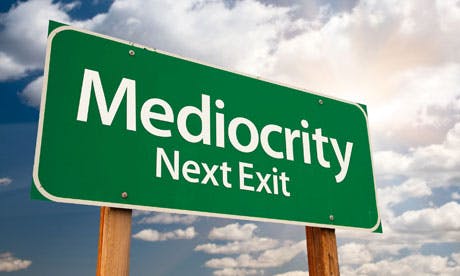Companies can get a boost in performance and results by communicating standards of acceptable performance.
The best companies, the ones that stay on top, get better every day. One way they do this is by deliberately raising and enforcing standard levels of “acceptable performance.” This drives steady gains in individual and organization effectiveness.
Meanwhile, mediocre companies lose ground as they plod along, merely maintaining the same performance levels over time. Winning organizations move ahead while the mediocre, at best, merely run in place.
How to get your organization past the “Mendoza Line”
Mario Mendoza played major league baseball from 1974 to 1982. Mr. Mendoza is best known for his woefully low lifetime batting average.
A player whose batting average is under .200 (i.e. just two hits for every 10 at bats) is said to be below the so-called “Mendoza Line.” Of course this standard of minimum acceptable performance isn’t mindlessly enforced – other pertinent factors are considered when making decisions to retain or release. Still, every big league player fears the associated stigma and risk of losing his spot on the team.
Following the practices below helps companies rise above mediocrity:
- Raise expectations — Research has shown that stretch goals drive higher performance so long as they are specific, measurable, attainable, relevant and trackable (SMART).
- Align capabilities — Make sure the organization design fits the business strategy and talent is segmented based on forecasted productivity and value creation.
- Deploy capabilities –– It is essential to have the right people on board and to take the wrong people off board. And everyone needs to be in the right role because people can’t realize their full potential if they’re in the wrong position. Home run legend Babe Ruth started his baseball career as a pitcher before he was moved to the outfield giving him more at bats.
- Expand capabilities — Non-job-related development activities enhance job-related development. Examples include structured training; informal learning that is planned or spontaneous; coaching; mentoring; and working on cross-functional project teams.
- Let go — Exiting a person from the company is the last resort. This should happen only after candid conversations and reasonable efforts to find the right fit have failed.
How to assess your company’s readiness
Most people will step up if they know that staying in the lineup means they have to get better every day to meet or exceed rising expectations. And they’ll get the message if you explicitly communicate and rigorously enforce your organization’s “Mendoza Line.”
Companies can get a boost in performance and results by communicating standards of acceptable performance (i.e. “Mendoza Line”) and actively (and compassionately) managing folks whose performance is near or below it.
Here are some questions to assess your organization’s position and readiness:
- Does our culture demand continuous improvement and high expectations?
- Do people have individual SMART stretch goals aligned with the strategy?
- Who would contribute more if they were in a different position?
- Do we provide the right opportunities to let people expand their capabilities?
- Do underperformers get a fair chance to improve? Are they treated with candor and respect?
So, is your organization driving sustainable high performance? Or is it perpetuating mediocrity?
